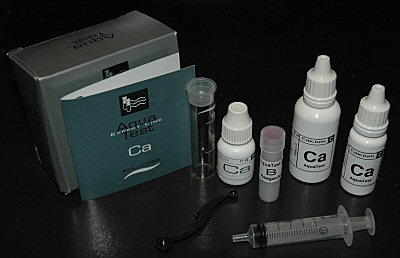
ELOS Expert Line Aqua Test - Calcium (Ca)
ELOS brand test kits have a good reputation and appear to be comparable to Salifert test kits, however this kit is more complicated and takes longer than the equivalent Salifert kit. I found the kit very easy but a lengthy process. Figure about twice as long to complete over the Salifert Calcium test kit. The process is drawn out because you have to do two tests. The first one is an approximation test and the second test refines the results. The approximation test has an accuracy of 50 ppm while the precision test has an accuracy of 10ppm. The precision test is essentially a repeat of the approximation test but uses 1 drop less of reagent C which you then switch to reagent D to make 10ppm increments to finish the test. My suggestion would be to use enough of reagent C to get you to 350ppm and then switch to reagent D to figure out the final number. As long as your calcium number is higher than 350ppm you can complete this in one test. You can always fine tune this +/- drop of reagent C base on your expected numbers. Instructions: 1) Fill vial to 5ml with syringe. 2) Add 7 drops of Reagent A. 3) Shake vial a few seconds. 4) Add .15 ml of powdered Reagent B using supplied spoon. 5) Shake vial a few seconds (not all powder will be dissolved). 6) Add Reagent C drop by drop to just below your expected value. Each drop represents 50 ppm calcium. If it changes from pink-violet to blue you went to far! Start over and use one drop less before going to step 7. 7) Add Reagent D drop by drop until the color changes from pink-violet to blue. Each drop represents 10ppm calcium. 8) Make sure the color change is stable for at least 30 seconds. 9) Multiply the number of Reagent C drops by 50 and the number of Reagent D drops by 10. Add the values to get your level of calcium as measured in ppm (parts per million). Note: Reagent A contains Potassium Hydroxide which can burn your skin. Be careful with it. |
